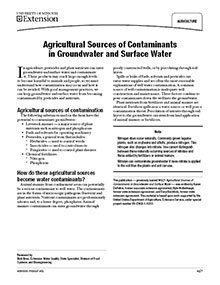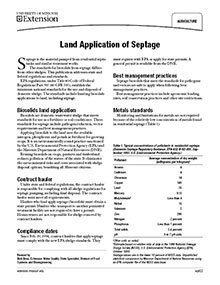

Land Application of Septage
Revised
Learn about regulations and standards related to biosolids from septage — biosolids land application, contract haulers, metals standards, lime stabilization, pathogen and vector requirements, and more — in this University of Missouri Extension guide.
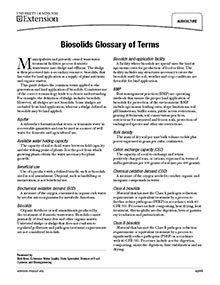
Biosolids Glossary of Terms
Reviewed
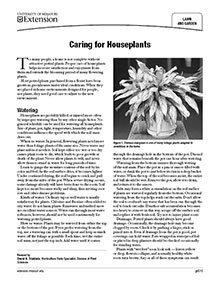
Caring for Houseplants
Reviewed
To many people, a home is not complete without attractive potted plants. Proper care of houseplants helps increase satisfaction and enjoyment from them and extends the blooming period of many flowering plants.
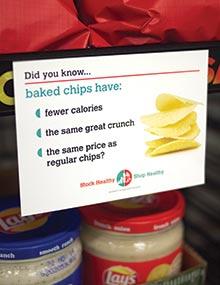
Stock Healthy, Shop Healthy: Large Shelf Talkers
New
Small food-retailers participating in the Stock Healthy, Shop Healthy program, help your customers learn how to select and store healthy foods by posting these shelf talkers to present health information about various products. Download, print and hang!

Preventing and Managing Plant Diseases
Revised $10
The first and best defense against plant diseases is a healthy plant. Visit our site to learn about Preventing and Managing Plant Diseases.
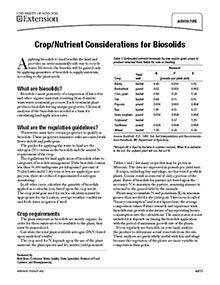
Crop/Nutrient Considerations for Biosolids
Reviewed
Applying biosolids to land benefits the land and provides an environmentally safe way to recycle waste. However, the benefits will be gained only by applying quantities of biosolids to supply nutrients, according to the plant needs.
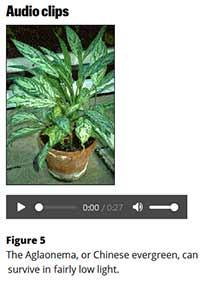
Caring for Houseplants, Page 2
Reviewed
Listen to audio clips on houseplant care.

Reducing the Risk of Groundwater Contamination by Improving Hazardous Waste Management
Revised
Two key steps to minimizing the pollution potential from farm, household and shed wastes on your farm are to minimize the amount of wastes and to recycle when possible.
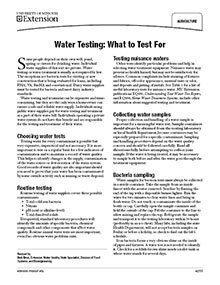
Water Testing: What to Test For
Revised
If your drinking water comes from a well, pond, spring or cistern, you need to know about various water tests and how to obtain water samples for testing. Keep your water supply safe and reliable. Learn how in this University of Missouri Extension guide.
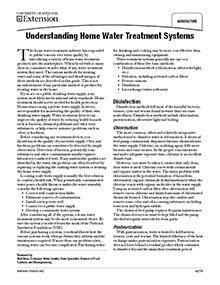
Understanding Your Home Water Treatment Systems
Revised
The home water treatment industry has responded to recent public concern over water quality by introducing a wide variety of home water treatment products into the marketplace. When faced with so many choices, consumers wonder what, if any, water treatment system they need.
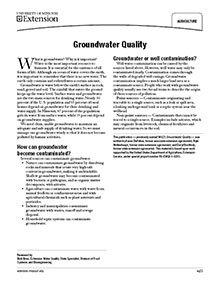
Groundwater Quality
Revised
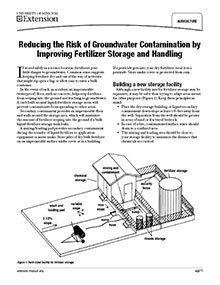
Reducing the Risk of Groundwater Contamination by Improving Fertilizer Storage and Handling
Revised
If stored safely in a secure location, fertilizers pose little danger to groundwater. Common sense suggests keeping fertilizer dry and out of the way of activities that might rip open a bag or allow rain to enter a bulk container.

Reducing the Risk of Groundwater Contamination by Improving Household Wastewater Treatment
Revised
Make sure your home's wastewater treatment system is properly designed, installed and maintained to minimize its impact on groundwater and surface water. Get tips from this University of Missouri Extension guide.
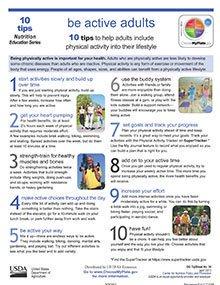
MyPlate: Be an Active Family—10 Tips to Help Adults Include Physical Activity
Reviewed
Editor's note
The following abstract describes a publication that is only available as a downloadable PDF.
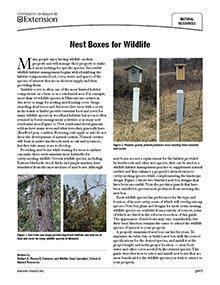
Nest Boxes for Wildlife
Reviewed
Editor's note
The References section was updated in June 2017.
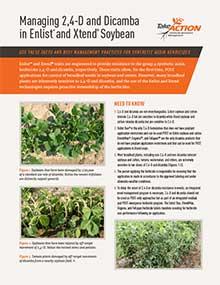
Managing 2,4-D and Dicamba in Enlist and Xtend Soybean
New
Editor’s note
The following abstract describes a publication that is only available as a downloadable PDF.
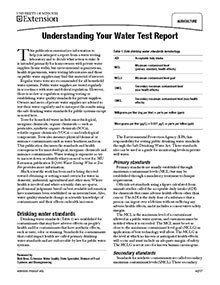
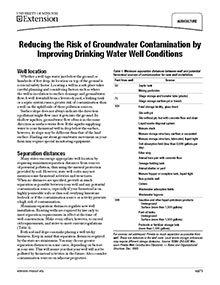
Reducing the Risk of Groundwater Contamination by Improving Drinking Water Well Conditions
Revised
Well location
Whether a well taps water just below the ground or hundreds of feet deep, its location on top of the ground is a crucial safety factor. Locating a well in a safe place takes careful planning and considering factors such as where the well is in relation to surface drainage and groundwater flow.
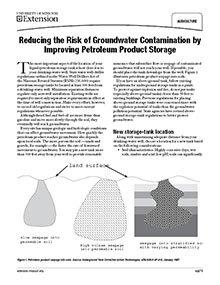
Reducing the Risk of Groundwater Contamination by Improving Petroleum Product Storage
Revised
The most important aspect of the location of your liquid-petroleum storage tank is how close it is to your drinking-water well. State water well-driller regulations outlined in the Water Well Drillers Act of the Missouri Revised Statutes (RSMo 256.600) require petroleum storage tanks be located at least 300 feet from a drinking-water well.
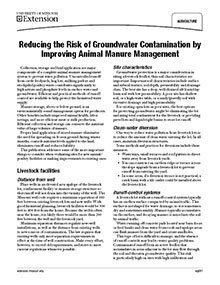
Reducing the Risk of Groundwater Contamination by Improving Animal Manure Management
Revised
Learn about livestock manure collection, storage and land application to prevent uncontrolled runoff from cattle feedyards, hog lots, milking parlors and stockpiled poultry waste.
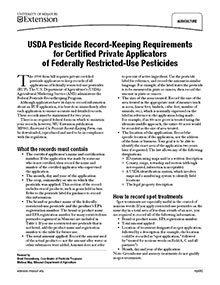
USDA Pesticide Record-Keeping Requirements for Certified Private Applicators of Federally Restricted-Use Pesticides
Revised
Brad Fresenburg
Coordinator of Pesticide ProgramsMelissa May
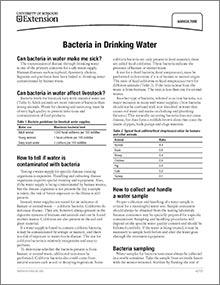
Bacteria in Drinking Water
Revised
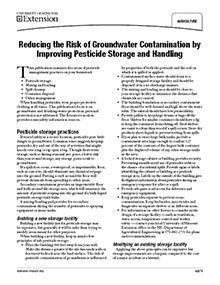
Reducing the Risk of Groundwater Contamination by Improving Pesticide Storage and Handling
Revised
This publication examines five areas of pesticide management practices on your farmstead:
